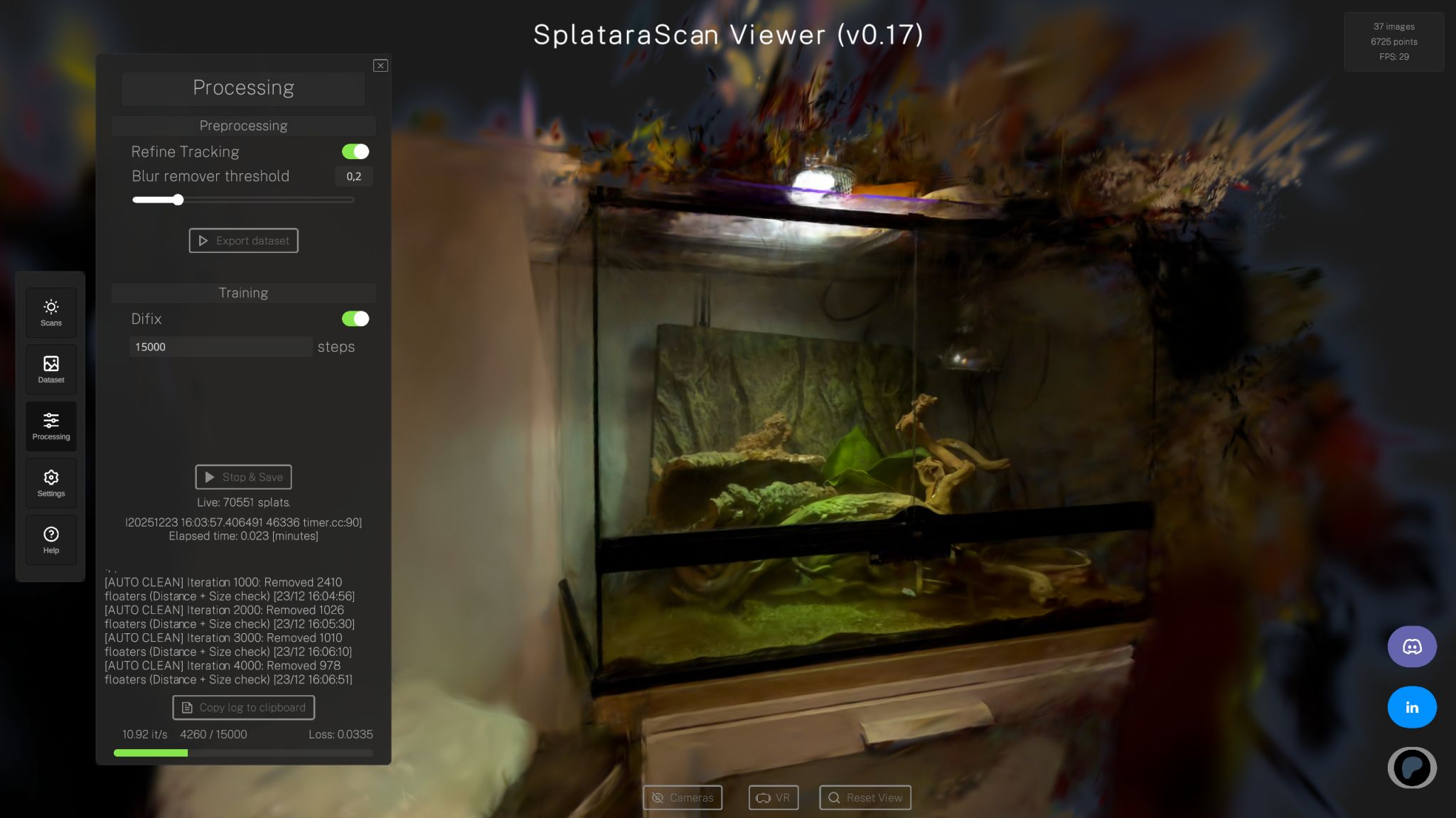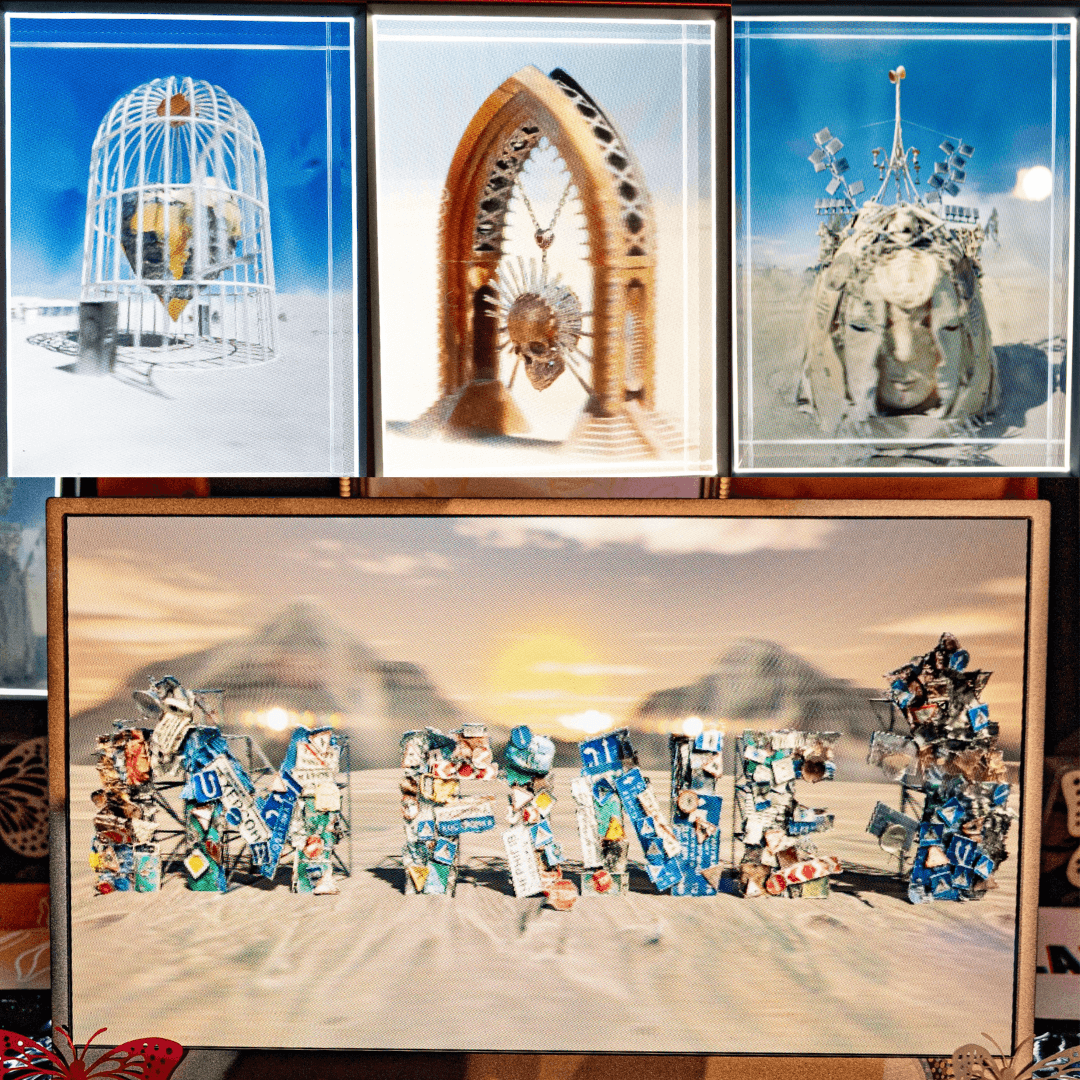
Michael Rubloff
Jul 11, 2023
If you’re like me, you probably have a messy text file full of commands you copy-paste every time you run Nerfstudio. This guide is meant to be a cleaner, friendlier version — a quick reference you can bookmark or share. The guide also assumes that you have already installed Nerfstudio.
Even though the platform is called Nerfstudio, there are several different methods you can use with Nerfstudio, including gaussian splatting.
⚡ This works for both NeRF and Gaussian Splatting workflows.
💡 If you’re looking for an Instant-NGP guide, head here.
If any of this still remains confusing, feel free to reach out to me!
Setup
Most people install via conda (but pip and Docker are also supported). Before you can train or view anything, Nerfstudio needs to run inside a Python environment. Most people use conda because it makes switching between environments easy.
Typically I'm either using a standard video or a collection of images. The first thing I will do in a new anaconda window will be to type
After that I will type

What this does:
cd nerfstudio→ makes sure you’re inside the Nerfstudio project folder.conda activate nerfstudio→ loads the dependencies (PyTorch, CUDA, etc.) that Nerfstudio needs.
Once you see (nerfstudio) in your terminal prompt, you’re ready.
Processing Data: Turning Raw Media into Training Input
Think of processing as preparing your photos or video so Nerfstudio knows the camera positions and how frames relate to each other. It’s the step that converts your raw input into a dataset with all the metadata NeRF/GSplat training requires.
From Images
This is the same process for Gaussian Splatting. This is to be used for processing images. Here's the standard code, followed by an example folder, named bulldozer.
Everything leading up to the bolded words should be standard for you. What you need to customize is the highlighted portion. So, if I had my images in a folder called bulldozer, my code would look like this:
When it is just images, you only need to point the command to the folder in which the images are located.
What’s happening here:
--datapoints to the folder where your photos live.--output-dirtells Nerfstudio where to save the processed dataset (camera poses, frame metadata, etc.).
Depending on how fancy you want to get, you can add on additional arguments. Arguments are essentially just extra parameters that you can fine tune to your liking. A lot of experimenting is required to figure out what you like to use, but to help save some time, here's an example of one that I prefer to use!
Possible choices: exhaustive, sequential, vocab_tree
I like to select exhaustive. Using exhaustive will be slower, but for me, my goal is to get the cleanest NeRF possible, so I'm ok with waiting. If that isn't you, that's totally fine! All of the options are still good. With that in mind, here is how the code is affected, with the new part highlighted in bolded.
If you want to see the full list of options, they can be found here!
Processing a Video in Nerfstudio
When you're starting with a video, it's ever so slightly more complicated. This time, instead of just giving the folder location, you need to specify the name of the video file as well. We'll stick with the same Bulldozer example from Images, but pretend that the name of the video file we are trying to process is called IMG_2892.mov. Notice that I need to specify the video file name in the first part, but I only need to give the folder name for the output.
If it fails, double check that you have the correct file extension written. I've spent way too much time trying to figure out why it wasn't running, only to realize that I had written IMG_2898.mp4 instead of IMG_2898.mov and vice versa.
What’s different with video: Nerfstudio extracts frames automatically and estimates camera motion. You give it the video file, it does the rest.
⚠️ Tip: File extensions (.mov vs .mp4) must be exact — this is a common place to trip up.
Nerfstudio will automatically pull out a percentage of the frames for you.
The Structure from Motion (SfM) processing stage can vary wildly depending on how large the dataset is. Once you have completed the processing step, your Anaconda window should look something like this.

Nerfstudio will also tell you the percentage of matches that were located. Ideally the more images that can be matched, the better.
Now that the SfM portion of the reconstruction process is complete, this is where you the amount of options really opens up.
As of right now, here are all of the supported methods in alphabetical order:
Instant NGP: Instant Neural Graphics Primitives with a Multi Resolution Hash Encoding
Instruct-GS2GS: Editing Gaussian Splatting Scenes with Instructions
Instruct-NeRF2NeRF: Editing 3D Scenes with Instructions
Feature Splatting: Gaussian Feature Splatting based on GSplats
Generfacto: Generate 3D models from text
K-Planes: Unified 3D and 4D Radiance Fields
LERF: Language Embedded Radiance Fields
LiveScene: Language Embedding Interactive Radiance Fields for Physical Scene Rendering and Control
Mip-NeRF: A Multiscale Representation for Anti-Aliasing Neural Radiance Fields
NeRF: The original NeRF paper.
Nerfacto: our de facto NeRF method combines modules focused on quality with modules focused on faster rendering. nerfstudio easily lets us experiment with the best of both worlds! There is also Nerfacto-Big and Nerfacto-Huge, which are more powerful and VRAM consuming methods.
Nerfbusters: Removing Ghostly Artifacts from Casually Captured NeRFs
NeRFPlayer: A Streamable Dynamic Scene Representation with Decomposed Neural Radiance Fields
PyNeRF: Pyramidal Neural Radiance Fields for fast NeRF anti-aliasing.
Tetra-NeRF: Representing Neural Radiance Fields Using Tetrahedra
TensoRF: Tensorial Radiance Fields
Splatfacto: Nerfstudio's homemade implementation of 3D Gaussian Splatting. There is another variation named Splatfacto-Big, for more detailed scenes.
SeaThru-NeRF: A NeRF method targeting underwater, foggy, or hazy scenes.
Zip-NeRF: Google's SoTA method.
Here I will demonstrate both the standard Nerfacto, Nerfacto-huge, and Gaussian Splatting code.
Again, the yellow highlighting is what will be unique to you. And if I want to use nerfacto-huge, the code would look like this:
If you want to train gaussian splatting, the code will look like this:
Assuming that everything is working, your anaconda window will look something like this.

How to load a checkpoint in nerfstudio
Once your NeRF has been fully trained, nerfstudio saves a checkpoint of it automatically. Checkpoints, or saved files are located in your outputs folder. If you're looking for that Outputs folder, go to the initial nerfstudio folder and it's located right there! For a while I couldn't figure out how I could load my checkpoint, but it's very simple. The file called config.yml is your checkpoint! You need to use this code in Anaconda and then customize the part that's bolded to what's unique to you.
This guide is meant as a practical cheatsheet with just enough context to know why you’re typing each command. Start with splatfacto or nerfacto, get a working pipeline, then experiment with flags and methods.
If something’s still unclear — or you’re hitting errors that aren’t obvious — feel free to reach out!







